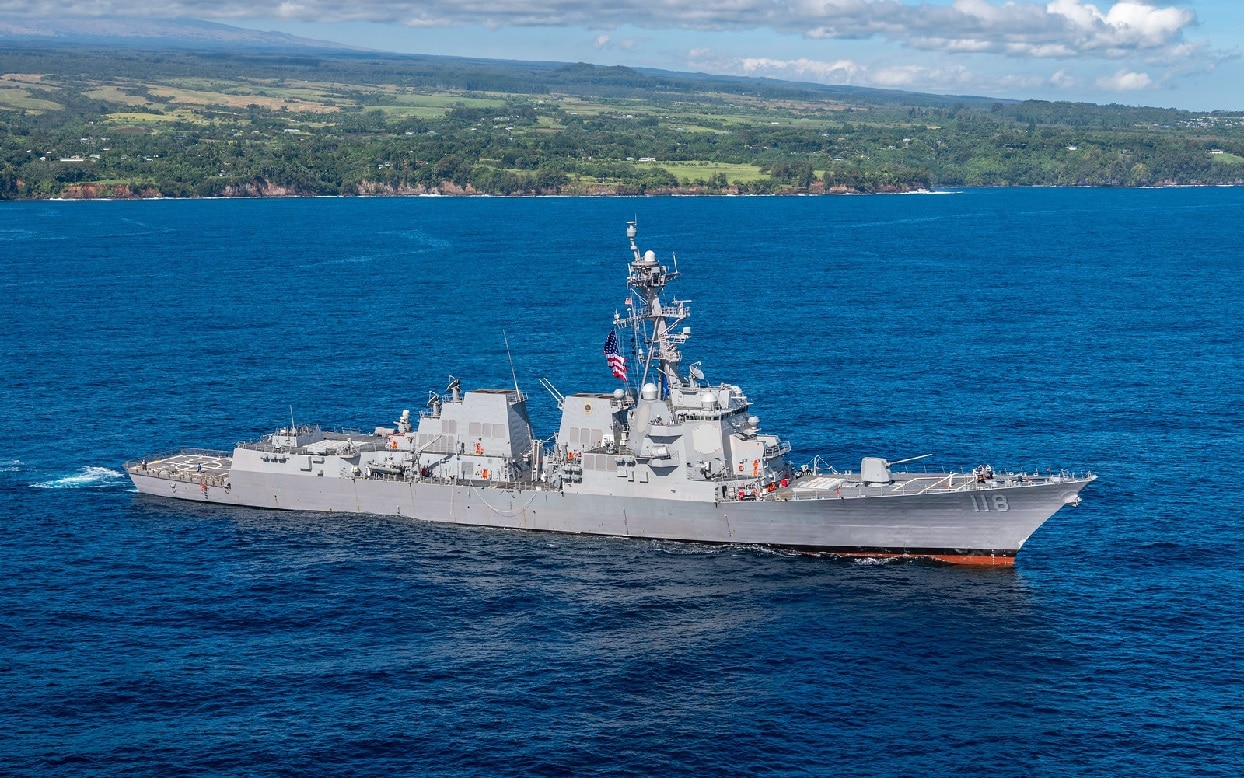The Iranians are at it again. Known for annoying U.S. Navy warships with small, fast-attack boats, now the Iranian navy is buzzing American vessels with helicopters.
The USS Essex (LHD-2), an amphibious assault ship, was sailing in the Gulf of Oman when an Iranian naval helicopter came within 25 yards of it on November 11. The helicopter reportedly flew as low as 3.5 yards off the water and circled the American ship three times.
Iranians Say the Essex Was an Illegal Presence
The Iranians said through state-run media that it was responding to a ship that had an “illegal presence” in the region. A Pentagon spokesman pointed out that these unsafe and unprofessional incidents can lead to the “risk of some sort of escalation and a miscalculation.”
The Essex, with marines on board, has been the target of Iranian harassment before. Another unsafe and unprofessional incident happened on November 2, when Iranian drones reportedly flew within 1,500 yards of the Wasp-class amphibious assault ship.
Iranians Apprehend U.S. Sailors in 2016
While the two above incidents were serious, a quick look a little further into the past shows how things can go wrong, and fast.
In 2016, two U.S. Navy riverine command boats had mechanical trouble and navigational mistakes that led them into Iranian territorial waters near Iran’s Farsi Island in the Persian Gulf. Ten American sailors were on board the vessels.
Patrol boats from the Islamic Revolutionary Guard Corps (IRGC) Navy seized the American boats, took the crew to Farsi Island, and held them for 15 hours before releasing them unhurt.
This was an embarrassing sequence of events for the U.S. Navy, especially since the American sailors got lost.
The Iranians had a public relations win on their hands because photos of the American sailors showed they kneeled in front of the Iranian personnel with their hands over their heads.
What Can the U.S. Navy Do?
The U.S. Navy will have to constantly be on guard for Iranian provocations. The Navy does not advertise its rules of engagement, but it is safe to say that it usually displays remarkable restraint.
The most difficult task is to determine if the Iranian patrol boats, helicopters, and drones are armed and if they have intent to use their weapons systems. But we are entering into a troubling pattern. Iran tries to provoke. The video of the provocation goes on social media. The United States gives a stern warning and then the process repeats itself.
How Bad Things Can get: The U.S. Once Shot Down an Iranian Civilian Jetliner
Mistakes are easy to make in these confrontational situations, and they can lead to tragedy.
In 1988, the U.S. Navy cruiser Vincennes accidentally shot down an Iranian passenger jet. The Vincennes thought it was engaging an Iranian fighter plane. 290 Iranians died during the tragedy.
That’s why it is so imperative that the U.S. Navy handle Iranian provocations with utmost care and professionalism.
Some observers have stated that the Iranians are smarting because of President Donald Trump withdrawing from the nuclear agreement with Iran in 2018. That may be part of the reason for the aggression, but it doesn’t tell the full story.
The Iranians seem to enjoy confronting the U.S. Navy in order to cause some type of incident that would make the United States look bad in the international community.
Expect the Iranians to continue to harass the U.S. Navy and look for the spokesman of the Department of Defense to deliver a strongly-worded statement in reply. And then expect this cycle to repeat itself.
1945’s new Defense and National Security Editor, Brent M. Eastwood, PhD, is the author of Humans, Machines, and Data: Future Trends in Warfare. He is an Emerging Threats expert and former U.S. Army Infantry officer.

